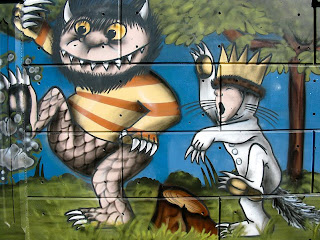Expectations of Form

I'm currently reading Film Art (Brodwell & Thompson, 2008), and in it the authors suggest that form is the overall system that the artwork creates in the mind of the audience. The reason we get frustrated when a song or story is not completed is because it violates our expectations of form. To demonstrate form expectations they do a little Hofstadterian exercise, a version of which I will repeat here.
What do you think the next letter will be?
A
Even from this one letter, you would probably predict that the next letter is B, so that the sequence would read AB.
AB
Ah, we were right. AB it is. That's satisfying. What's next? C?
ABB
Oh dear. This is discomforting because it does not follow a pattern we recognize.
ABBCCC
Oh, here we go. We can now see a pattern: as each letter appears, it appears one more time than the last letter. We are again comforted.
ABBCCCB
Damn. Discomforted again. What is the pattern?
ABBCCCBBA
Well, we got it wrong, but now we can see that we have a comfortable symmetrical pattern.
I just had this idea five minutes ago, and it may suck, but here goes: for art that reveals itself over time (such as music, novels, and film), we can get great pleasure by violating expectations of certain patterns but eventually revealing more complex patterns.
We can see this in the progression in the letter string above. We keep thinking we see a simple pattern, then we are confused, but eventually it all falls together to something more beautiful.
Don't you think ABBCCCBBA is more interesting, more beautiful than ABCDEFGHI?
So how might this work in, say, a story?
You start the story with what appears to be a typical pattern of other stories.
Then you violate that pattern, temporarily violating the audience's expectations.
As the story progresses, however, a new, more complex order emerges which is ultimately more satisfying.
It's a new idea, and I'd love to hear anyone's thoughts on it. Perhaps it could be the basis of an AI story or music composer.
Pictured is a snapshot of colors from a slide projector, reflected on the celing with flexible reflective surfaces. Thanks to Daniel Saunders for setting it all up.
Reference
Bordwell, D. & Thompson, K. (2008). Film Art. Eighth Edition. McGraw-Hill: Boston.

Comments